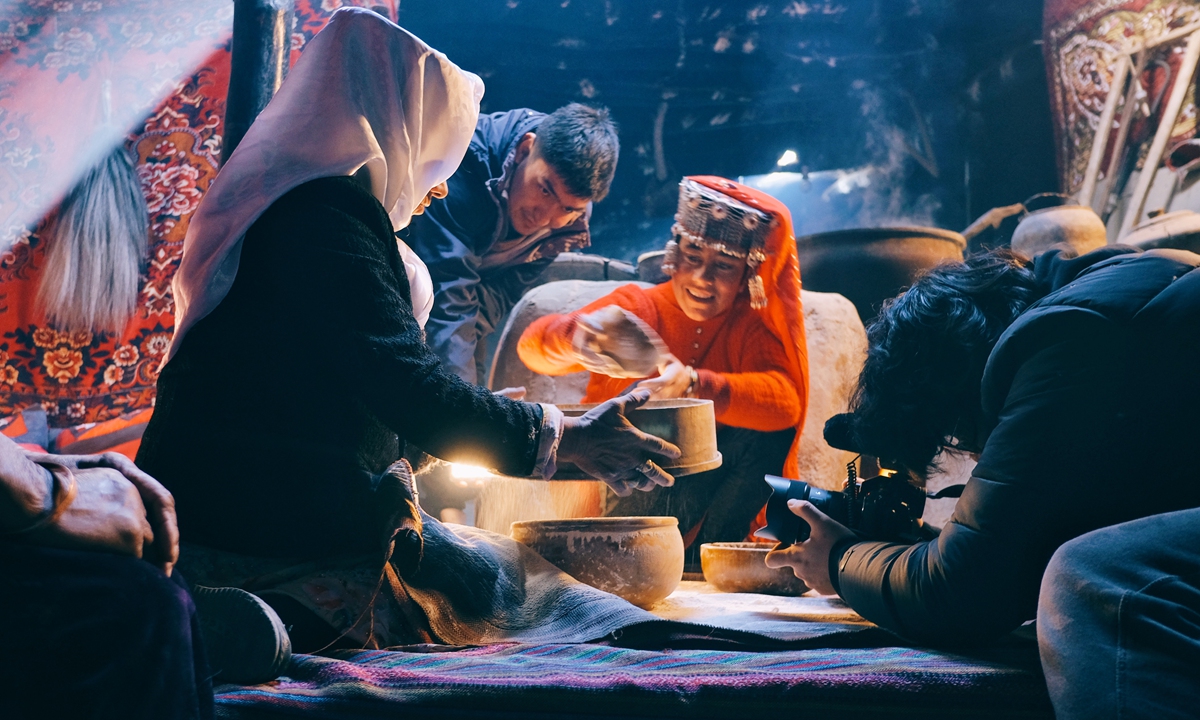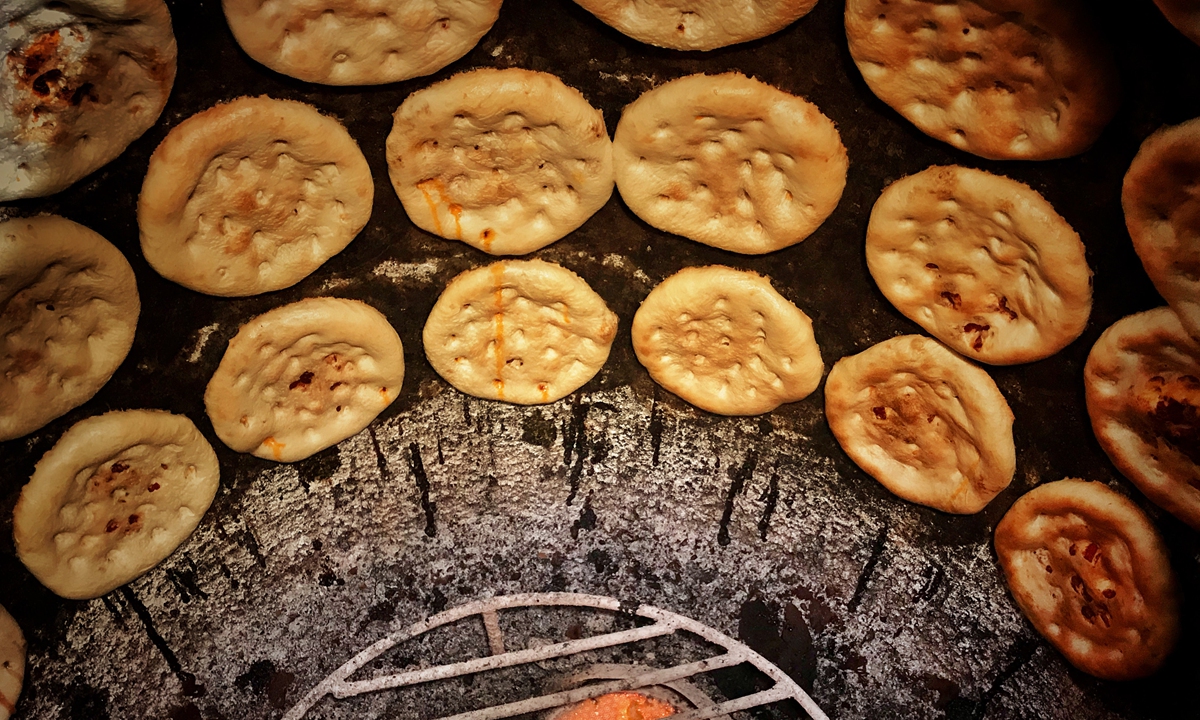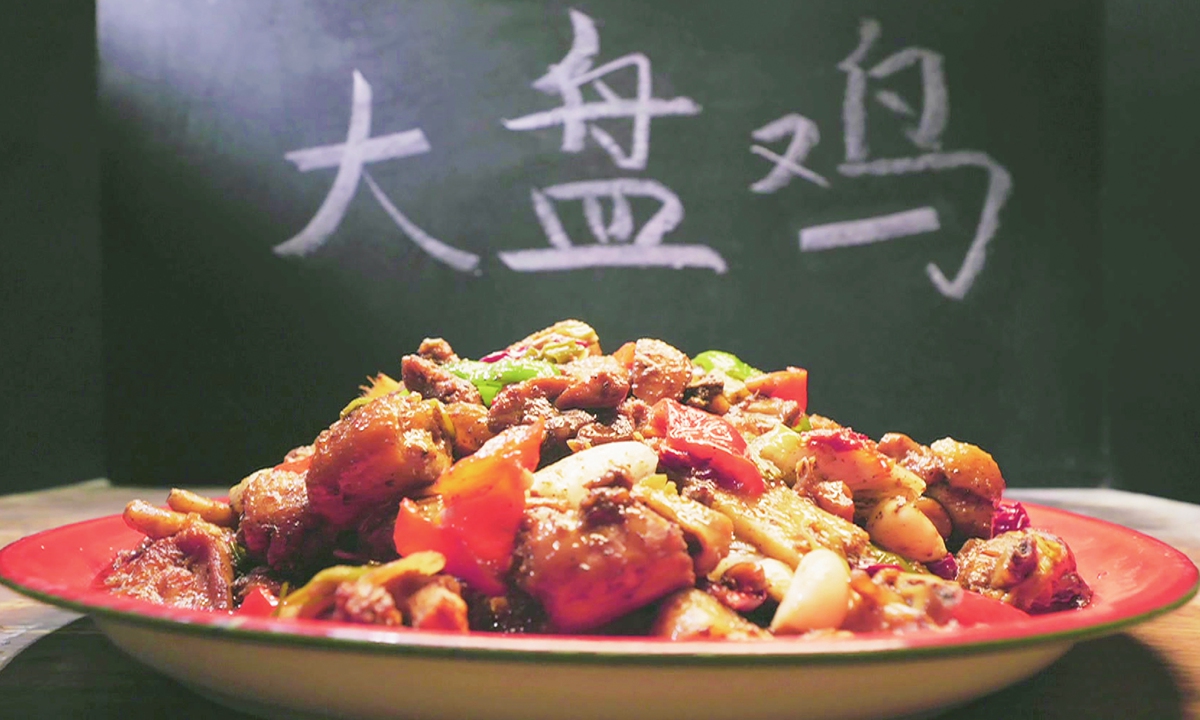ARTS / TV
Last documentary in ‘I Am From Xinjiang’ trilogy presents audiences with a tasty feast
A medley of flavors

The production team shoots a scene with an ethnic Tajik family in Xinjiang. Photo: Courtesy of Kurbanjan Samat

Baking naans Photo: Courtesy of Kurbanjan Samat

The big-plate chicken Photo: Courtesy of Kurbanjan Samat
Starting from Thursday, the latest chapter in the well-known "I Am From Xinjiang" documentary trilogy is expected to present audiences with a feast of colorful stories about the diverse range of culinary traditions that can be found in Northwest China's Xinjiang Autonomous Region, marking a tasteful full stop for the series.The first episode of Flavorous Xinjiang, the third documentary in the "I am from Xinjiang" series, is scheduled to air on CCTV 9 and Bilibili, a popular Chinese streaming platform, Thursday night. The documentary will have six episodes in total, each 50 minutes long.
Flavorous Xinjiang uses food as a means to present the stories of Xinjiang's multiculturalism, according to the production team. It presents herdsmen's stewed mutton, Xinjiang barbecue, pilaf with Brassica rapa and raisins, fried rice noodles, wild apples and naan… behind each food there is a story about the people of Xinjiang.
"I hope every viewer who watches Flavorous Xinjiang, wherever you are from, can find your own memories and past life from these stories," Kurbanjan Samat, director and producer of the trilogy, said.
The inspiration to make a documentary on Xinjiang food hit Kurbanjan when he was having a meal consisting of lamb leg, lamb soup, fried rice noodles, cold noodles and "big-plate chicken" - lambs have been a traditional source of food for the nomadic people living here for centuries, while the rest are famous Xinjiang dishes of today that evolved from food of other parts of China.
"I suddenly realized that the food of Xinjiang is a result of 'coming from Xinjiang' and 'going to Xinjiang,'" Kurbanjan said.
I Am From Xinjiang on the Silk Road and I'm Going to Xinjiang are the first two works in his "I Am From Xinjiang" trilogy.
Kurbanjan told the Global Times in a previous interview that he launched the series to present the real Xinjiang to the outside world against a backdrop of a general global misunderstanding of the region following several terrorist attacks that took place in Xinjiang, especially the attack in the capital of Urumqi on July 5, 2009, which caused 197 deaths and injured over 1,700.
The documentary I Am From Xinjiang on the Silk Road was released in June 2016 and focused on the lives of people from Xinjiang working across China. The film won Samat several "outstanding documentarian" awards across China. The second documentary, I'm Going to Xinjiang, was released in May 2018 and this time focused on the stories of people who came to Xinjiang from other parts of China.
Netizens have shown great interest in the latest chapter with its focus on delicious food. Topics with hashtag of "Food in Xinjiang that I never forget" or "Go to Xinjiang for tasty food" have been trending on Chinese social media over the past two days in the runup to the show's release. Many netizens posted pictures and videos of food from the region and some commented that they cannot wait to go to Xinjiang to taste these delicious dishes and appreciate the splendid landscape and culture of local ethnic groups as soon as the pandemic ends.
Kurbanjan is also fond of the various food and integration of flavors in his hometown.
"It is because of Xinjiang's tolerance that different flavors can be absorbed, integrated and localized, thereby expanding Xinjiang cuisine," he said.
Though shooting Flavorous Xinjiang was very difficult due to the COVID-19 pandemic, Kurbanjan is grateful to finally see the release of the documentary.
"It took three years to unveil it… Although we could not have a grand offline premiere this time, we can enjoy it online," he told the Global Times, adding that he welcomes more local TV stations to bring the beauty of Xinjiang cuisine to more people.
Tong Liya, a Chinese actress of the Xibe ethnic group from Ili, Xinjiang, serves as the narrator of the documentary as well as the producer.


